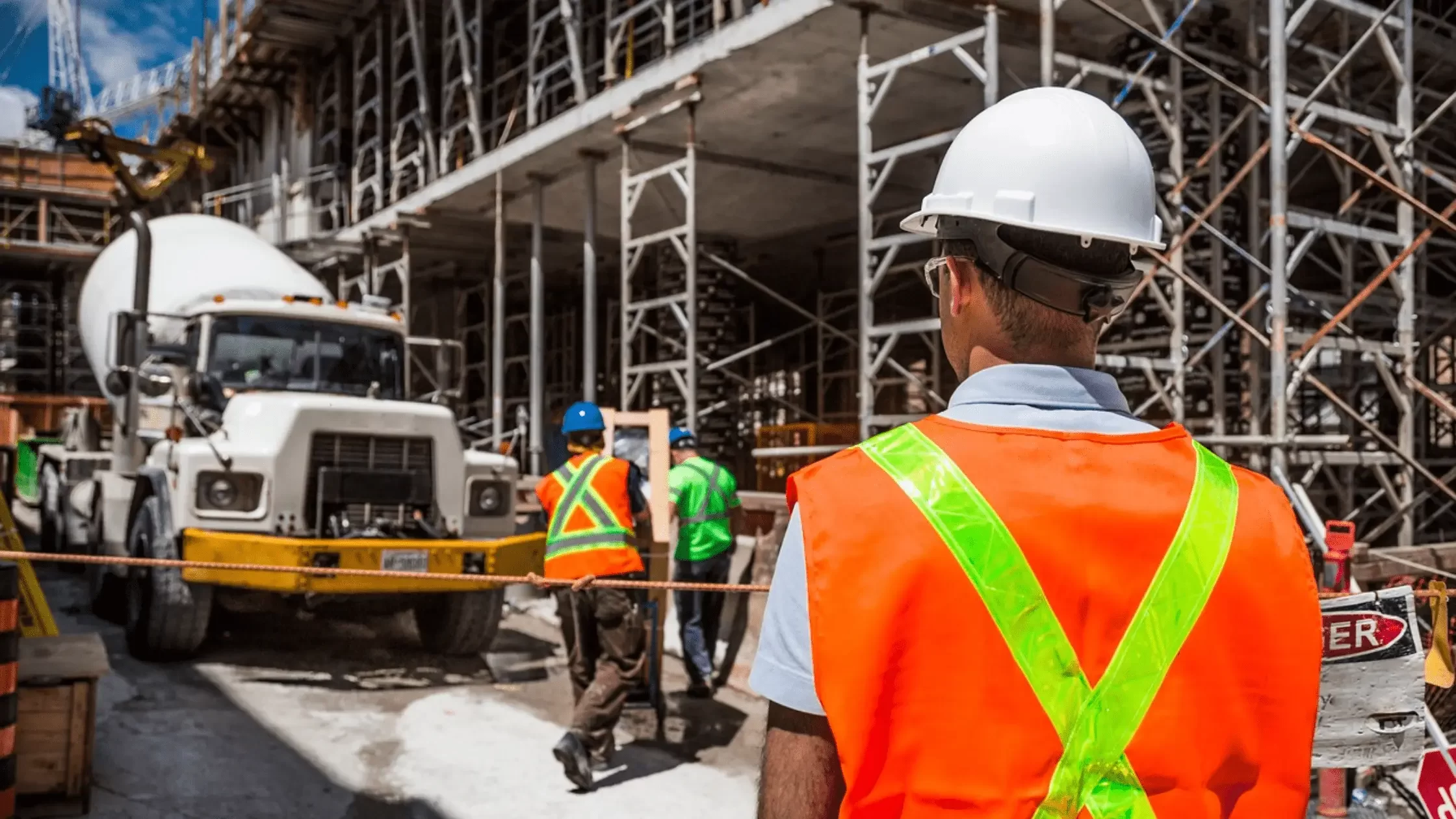What are Building Materials?
Building materials encompass a vast array of substances used in construction, each with its unique properties and functions. These materials play a crucial role in shaping the structural integrity, safety, and functionality of buildings and infrastructure. Let’s take a closer look at some of the primary building materials and their applications:
Primary Building Materials
Civil Engineering Materials
Civil engineering materials form the backbone of construction projects, providing strength, durability, and stability to structures. Concrete, steel, and bricks are among the most common civil engineering materials used in construction:
- Concrete: Concrete is a versatile and durable building material composed of cement, aggregates, and water. It is used in various forms, including foundations, columns, beams, and slabs. Concrete offers excellent compressive strength and is ideal for supporting heavy loads in buildings and infrastructure projects.
- Steel: Steel is prized for its high strength-to-weight ratio and flexibility, making it an ideal material for structural frameworks, reinforcements, and building components. Steel beams, columns, and trusses provide stability and support in tall buildings, bridges, and industrial structures.
- Bricks: Bricks are traditional building materials made from clay, shale, or other natural materials. They offer thermal insulation, fire resistance, and aesthetic appeal to buildings. Bricks are commonly used in walls, facades, and decorative elements, adding texture and character to architectural designs.
Electrical Materials
Electrical materials are essential for the installation and operation of electrical systems within buildings. These materials facilitate the distribution of electricity to power lighting, appliances, and electronic devices. Let’s explore some common electrical materials used in construction:
- Wiring: Wiring is used to connect electrical devices and components, allowing electricity to flow from the power source to various outlets and fixtures within a building. Copper and aluminum are the primary materials used for electrical wiring due to their conductivity and durability.
- Switches and Outlets: Switches and outlets are devices that control the flow of electricity and provide access to power for electrical devices. Switches are used to turn lights and appliances on and off, while outlets serve as points of connection for plugs and cords.
- Cables: Electrical cables are insulated wires used to transmit electricity from one point to another within a building. They come in various types, including power cables, communication cables, and data cables, depending on their specific application.
Secondary Building Materials
In addition to primary building materials, there are various secondary materials and components used in construction projects to enhance functionality, safety, and comfort. Let’s explore some of these secondary building materials and their roles:
Fire Fighting and Alarm Systems
Fire fighting and alarm systems are critical for protecting buildings and occupants from fire hazards. These systems detect and suppress fires, alerting occupants and emergency responders to potential threats. Common components of fire fighting and alarm systems include:
- Sprinkler Systems: Sprinkler systems consist of water-filled pipes and sprinkler heads installed throughout a building. In the event of a fire, heat-sensitive sprinkler heads activate, releasing water to extinguish the flames and control the spread of fire.
- Smoke Detectors: Smoke detectors are devices that detect the presence of smoke or fire particles in the air. They emit audible and visual alarms to warn occupants of potential fire hazards, allowing them to evacuate safely and alerting emergency services.
- Fire Alarms: Fire alarms are signaling devices that emit audible and visual alerts in response to fire emergencies. They are interconnected with smoke detectors and sprinkler systems to provide comprehensive fire detection and notification capabilities.
Gensets
Gensets, or generator sets, are backup power systems designed to provide electricity during power outages or emergencies. These systems consist of a diesel or gas-powered engine and an alternator that generates electricity when the primary power source fails. Gensets are essential for ensuring uninterrupted power supply to critical systems and equipment in buildings, such as:
- Emergency Lighting: Emergency lighting systems provide illumination during power outages or evacuations, ensuring safe egress for occupants. Gensets power emergency lighting fixtures, exit signs, and stairwell illumination to maintain visibility in darkened areas.
- Life Safety Systems: Life safety systems, such as fire alarms, smoke detectors, and emergency communication systems, rely on backup power to function effectively during emergencies. Gensets provide reliable power supply to these systems, enabling timely detection and response to fire and life safety threats.
- Critical Equipment: Critical equipment and systems, such as medical devices, security systems, and communication infrastructure, require continuous power to operate. Gensets serve as a reliable source of backup power, ensuring uninterrupted operation and minimizing disruptions to essential services.
Pipes and Fittings
Pipes and fittings are essential components of plumbing systems, facilitating the distribution of water and the disposal of wastewater within buildings. These systems are vital for maintaining hygiene, sanitation, and comfort in residential, commercial, and industrial settings. Common types of pipes and fittings used in plumbing systems include:
- PVC Pipes: PVC (polyvinyl chloride) pipes are durable, lightweight, and corrosion-resistant, making them ideal for various plumbing applications. They are commonly used for water supply lines, drainage systems, and irrigation networks in buildings and infrastructure projects.
- Copper Pipes: Copper pipes are renowned for their excellent thermal conductivity, corrosion resistance, and durability. They are widely used in plumbing systems for potable water distribution, heating and cooling systems, and gas lines. Copper pipes are easy to install, maintain, and repair, making them a preferred choice for plumbing professionals.
- Pipe Fittings: Pipe fittings are connectors that join sections of pipe together or redirect the flow of water within a plumbing system. They come in various shapes, sizes, and materials, including brass, stainless steel, and plastic. Common types of pipe fittings include couplings, elbows, tees, and valves, which play a crucial role in ensuring the integrity and functionality of plumbing systems.
Pumpsets
Pumpsets are mechanical devices used to transport fluids, such as water or chemicals, within buildings and infrastructure. These systems consist of pumps, motors, valves, and piping networks that work together to move fluids from one location to another. Pumpsets are essential for various applications, including:
- Water Supply: Pumpsets are used to extract water from underground sources, such as wells, boreholes, and reservoirs, and deliver it to buildings for domestic, commercial, and industrial use. They ensure reliable water supply for drinking, sanitation, irrigation, and firefighting purposes.
- HVAC Systems: Pumpsets play a crucial role in heating, ventilation, and air conditioning (HVAC) systems, circulating chilled or hot water through pipes to control indoor temperature and humidity levels. They facilitate the transfer of heat energy between the HVAC system and building spaces, ensuring thermal comfort and energy efficiency.
- Wastewater Management: Pumpsets are employed in wastewater treatment plants, sewage pumping stations, and drainage systems to transport wastewater from buildings to treatment facilities or discharge points. They help prevent waterlogging, flooding, and environmental pollution by efficiently removing excess water and wastewater from urban areas.
Tools and Machinery
Tools and machinery are essential for construction activities, enabling workers to assemble, install, and maintain building materials and components. These equipment aid in various tasks, including excavation, demolition, carpentry, and finishing work. Common types of tools and machinery used in construction projects include:
- Power Tools: Power tools, such as drills, saws, and sanders, are powered by electricity or battery packs and are used to cut, shape, and fasten building materials with precision and efficiency. They are indispensable for tasks like drilling holes, cutting lumber, and smoothing surfaces during construction and renovation projects.
- Heavy Equipment: Heavy equipment, such as excavators, bulldozers, and cranes, are large machinery used for earthmoving, site preparation, and material handling on construction sites. They are capable of lifting, moving, and manipulating heavy loads, making them essential for tasks like excavation, grading, and lifting heavy materials.
- Hand Tools: Hand tools, such as hammers, wrenches, and screwdrivers, are manual devices operated by hand to perform various construction tasks. They are versatile, portable, and easy to use, making them indispensable for tasks like framing, plumbing, and electrical work.
Valves and Strainers
Valves and strainers are critical components of plumbing and HVAC systems, regulating the flow of fluids and removing impurities from pipelines. They ensure efficient operation, reliability, and safety in building infrastructure. Let’s explore the roles and applications of valves and strainers in construction projects:
- Valves: Valves are mechanical devices used to control the flow of fluids within pipes and pipelines. They open, close, or regulate the flow rate of liquids, gases, or slurries to maintain optimal system performance and functionality. Valves are classified based on their design, operation, and application, with common types including gate valves, ball valves, butterfly valves, and globe valves.
- Strainers: Strainers are filtration devices used to remove solid particles, debris, and contaminants from flowing fluids in pipelines. They prevent clogging, fouling, and damage to downstream equipment by capturing unwanted particles before they can cause problems. Strainers are installed upstream of pumps, valves, and other critical components to protect them from damage and ensure smooth operation.
Conclusion
Building materials are the essential components that enable the construction of safe, functional, and aesthetically pleasing buildings and infrastructure. From the foundational elements to the mechanical systems and finishing touches, each material plays a vital role in shaping the built environment. By understanding the characteristics, properties, and applications of different building materials, construction professionals can make informed decisions and create structures that meet the highest standards of quality, durability, and sustainability. As advancements in materials science continue to evolve, the future of construction holds promise for innovation, efficiency, and environmental stewardship. Let’s continue to explore, innovate, and build a better world with the help of building materials.
For more detailed information, check out Wikipedia’s page on building materials.





